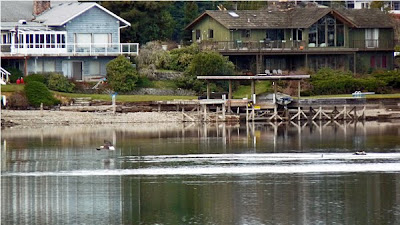 For those who asked after Quicksilver, he's doing just fine except for his penchant for getting off his play areas and gamboling around on the floor under Pyewackit the cat's stealthy observation. Today he decided he'd stay put if I gave him an unlimited supply of tropical fruit nutri-berries and played the video SWEENY TODD over and over so he could watch it--over and over.
Who knew he'd like bloody musicals starring Johnny Depp.
For those who asked after Quicksilver, he's doing just fine except for his penchant for getting off his play areas and gamboling around on the floor under Pyewackit the cat's stealthy observation. Today he decided he'd stay put if I gave him an unlimited supply of tropical fruit nutri-berries and played the video SWEENY TODD over and over so he could watch it--over and over.
Who knew he'd like bloody musicals starring Johnny Depp.
And nest news from Brett Odom the sharp eyed observer of Charlotte and Pale Male Jr. at the 888 nest--
Yesterday, (Thursday December 10th), Charlotte spent some time just sitting at the nest site on 888 7th Avenue. It was around noon, so she wasn't roosting there for the night. Also, on Wednesday, there were two hawks soaring above the 888 building. One was Charlotte and I am guessing that the other was a foreigner. I doubt it was Jr. since he always disappears during the winter, and Charlotte eventually chased the hawk across the river into NJ.
And in answer to a question of mine--
Oh, and Ziggy hatched April 30. The 2009 egg should have hatched sometime between April 18 - 27 if it had been viable.
Sorry this is a short one, more coming up after I've actually finished shoveling all the 16 inches of snow that is clogging up life.
During the snowfall I was attempting to get some snow off as it arrived so was shoveling at 2 in the morning. It was a very wet heavy snow, which was sticking to all the trees particularly to the conifers. I'd been hearing branches crack around the neighborhood, when an extremely large crack sounded above my head in one of the Spruce trees in the front yard. I dived for the front porch, it has a roof, just as a major branch came plummeting out of the sky near where I'd been standing to a chorus of House Finch danger calls. The House Finches "own" the Spruces in the front yard as the Juncos own the ones in the back.
After deciding no more were coming down, I checked to make sure nobody had come down with the bough. No little trapped birds so I suspect they all made it. And after fleeing likely came back in a few minutes and snuggled back in on another branch.
Donegal Browne














